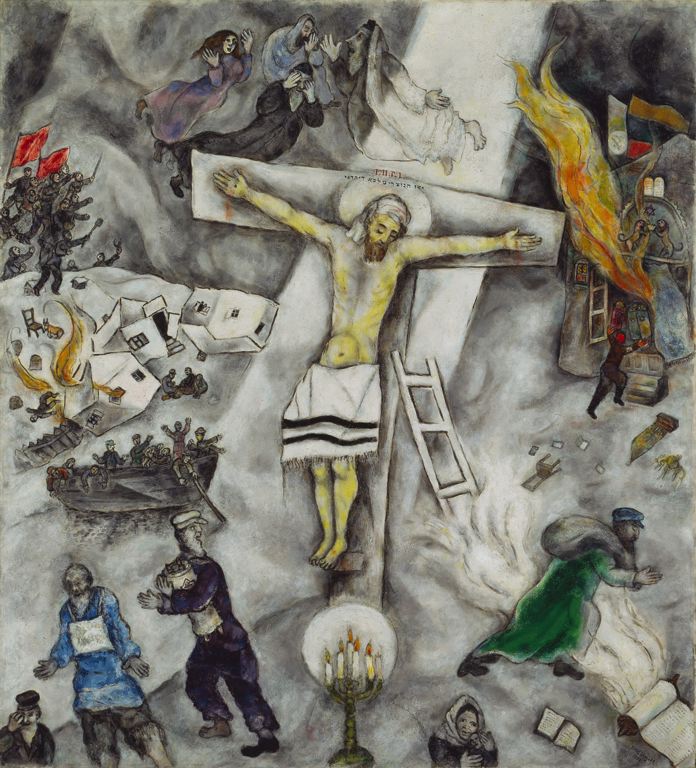Chicago’s other Chagall
By Robin Amer

Chicago’s other Chagall
By Robin AmerVisitors to the Art Institute of Chicago sometimes linger in front of the electric-blue stained glass windows cloistered at the eastern end of the building. They are Marc Chagall’s 1977 paean to America made just after the nation’s bicentennial – and, according to the museum’s website, in honor of Richard J. Daley, who had died the same year. They are also one of the Art Institute’s most recognizable works, and one of Chagall’s most famous.

In the Chagall’s 1938 White Crucifixion, a jaundiced Jesus hangs suspended from the cross against a swirling grey backdrop. His waist is wrapped with a tallis, or Jewish prayer shawl, and floating all around him are scenes of Jewish destruction: A battalion of men, with sabers and red flags raised, storm a burning shtetl littered with debris; a red-faced figure rushes into a synagogue that’s consumed by flames in order to save its Torah and other sacred artifacts; peasants and another figure, a rabbi perhaps, cover their faces and wail. A Hebrew inscription on the cross reads Jesus of Nazareth, the King of the Jews.
Chagall, born Moishe Segal in White Russia in 1887, fled France for New York in 1938, barely escaping Vichy France and the Nazi concentration camps. The persecution of his people and the destruction of the world he had left behind were very much on his mind. He went on to process the horrors of the Holocaust through the lens of modernist painting.
“The way in which Chagall harnesses the lost world of the past and this incredibly revolutionary world of contemporary painting … I don’t know of anyone else straddles … those two worlds,” said Chagall biographer Jonathan Wilson. “We might think of Chagall as the kind of shtetl cow to the bull of the corrida, which is Picasso.”
Chagall was obsessed, as he wrote in his 1922 memoir My Life, with “the pale face of Jesus,” and painted dozens of crucifixion scenes during his years in America. Wilson explores why in the audio above.
Dynamic Range showcases hidden gems unearthed from Chicago Amplified’s vast archive of public events and appears on weekends. Jonathan Wilson spoke at an event presented by the Woman’s Club of Evanston in March of 2007. Click here to hear the event in its entirety.